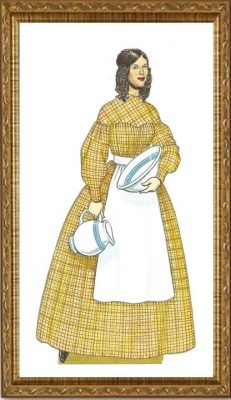Long ago the dress was a symbol of status and dignity. For hundreds of years the purpose of the dress […]
To continueA pioneer dress and apron. This dress and apron, come from the civil war and pioneer era in America .(160 […]
To continueLaura Ashley was a British fashion designer. She understood that one couldn’t possibly appeal to all of the people, all […]
To continueMoritz Oppenheim is known primarily for the series of paintings in which he depicted tradional Jewish life. It was on […]
To continueThis house dress is of yellow, red and tan plaid gingham. The bodice is canvas-lined for extra strength and warmth. […]
To continuepost 5 post 5 post 5 post 5 post 5 post 5 post 5 post 5 post 5 post 5 post 5 post 5 post 5 post 5 post 5 post 5 post 5 post […]
To continuepost 6 post 6 post 6 post 6 post 6 post 6 post 6 post 6 post 6 post 6 post 6 post 6 post 6 post 6 post 6 post 6 post 6 post 6 post […]
To continuepost 1 post 1 post 1 post 1 post 1 post 1 post 1 post 1 post 1 post 1 post 1 post 1 post 1 post 1 post 1 post 1 post 1 post 1 post […]
To continuepost 4 post 4 post 4 post 4 post 4 post 4 post 4 post 4 post 4 post 4 post 4 post 4 post 4 post 4 post 4 post 4 post 4 post 4 […]
To continuepost 3 post 3 post 3 post 3 post 3 post 3 post 3 post 3 post 3 post 3 post 3 post 3 post 3 post 3 post 3 post 3 post 3 […]
To continuepost 2 post 2 post 2 post 2 post 2 post 2 post 2 post 2 post 2 post 2 post 2 post 2 post 2 post 2 post 2 post 2 post 2 post 2 […]
To continueThis house dress is of yellow, red and tan plaid gingham. The bodice is canvas-lined for extra strength and warmth. This dress was often worn hoopless when doing heavier chores or working in the garden. The girl wears an apron: nearly every woman of the era wore an apron at some time during the day, for cooking, sewing, cleaning or gardening, and there was a different size apron for almost every chore. (The apron was truly an indispensable item of working apparel in this time .working women in factories and mills wore large aprons: housemaids wore them: schoolteachers and shop assistants wore smaller, black cotton aprons, often with matching sleeve protectors: and many men wore aprons for their
work, from clerk to carpenters.) In this era cleanliness – washing oneself daily- was the latest fad and became an fashion. In the picture there are a pitcher and basin such as would be found in each of the bedrooms in every home.
